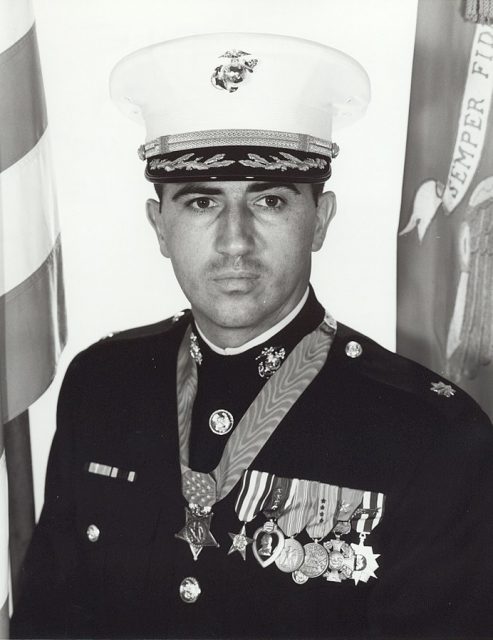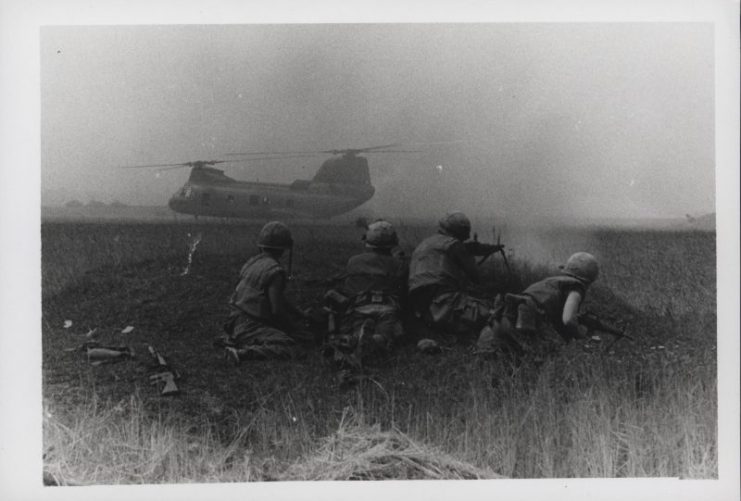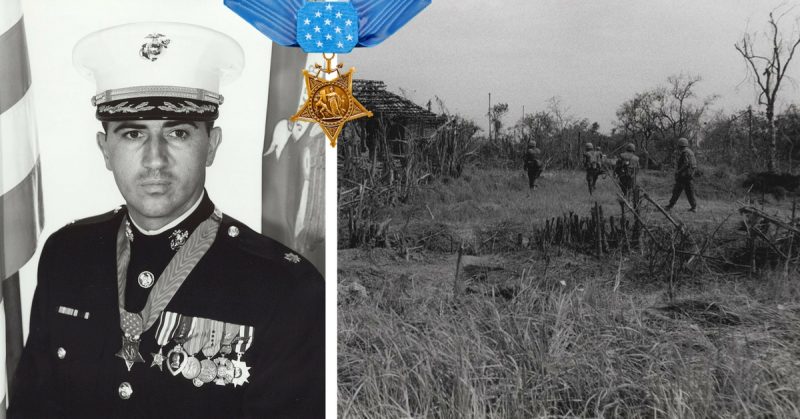It can easily be said that fighting is a family affair when it comes to military service. It is not uncommon for sons to follow in their father’s footsteps or for brothers to meet each other’s challenge to serve and fight.
Such was the case for the Vargas family where all four brothers were involved in combat. The military service of this family spanned three wars – from the sand of Iwo Jima to the frozen hills of Korea and finally the jungles of Vietnam. Jay Vargas, the youngest, undoubtedly endured his fair share of teasing and fighting from his older brothers as they became combat veterans. However, it was the youngest son who emerged from his combat experience with the nation’s highest military honor.
Despite not having slept for 36 hours due to combat also worthy of merit, Capt Vargas and Company G were inserted near the village of Dai Do. Leading an attack across 700 yards of open ground, Vargas destroyed multiple machine-gun positions by himself. He did it despite wounds he had received during the prior action and more during this assault. Once Company G had taken the village, they were subjected to a voracious counter-attack. Taking refuge in the cemetery and digging up fresh graves for foxholes, Vargas led Company G to hold on. After three days of battle, Captain Jay Vargas had gained the nation’s highest military honor.
A Family Ready to Fight
Jay Vargas was born in 1938 Winslow, Arizona to a family of immigrants. His father was Hispanic while his mother was Italian and together they raised four, fighting fit boys. The oldest Vargas, Angelo, fought his way through the black sands of Iwo Jima. Next, Frank took part in the action during the bloody struggle for Okinawa. Joseph fought during the Korean War, and that left the youngest, Jay, to see if he would follow in their footsteps.
Jay Vargas graduated High School in Winslow, Arizona where he was a standout player in baseball. Moving on to Northern Arizona University, Vargas eventually joined the Class A Portland team of the Los Angeles Dodgers club team. Realizing that a career in baseball was unlikely to happen, Vargas decided to put on another uniform.
His mother reportedly implored him to join the US Air Force but to no avail. In 1963, Jay Vargas entered the United States Marine Corps and became a commissioned officer. He was assigned to 1st Battalion, 5th Marines, 1st Marine Division. By 1968, Vargas was genuinely following in the footsteps of his brothers experiencing heavy combat throughout the jungles of Vietnam.

From One Fight to the Next
On April 29, Captain Jay Vargas was serving with Company G, 2nd Battalion, 4th Marines near the demilitarized zone between North and South Vietnam. The last unit in that particular area of operations, Company G was unable to be airlifted out due to heavy enemy fire making any helo lift too dangerous. The result was Vargas leading Company G on foot out of the area under heavy artillery fire to the base camp. Arriving relatively unscathed, rest for Vargas and the men of Company G was short-lived. Despite a lack of sleep for nearly 36 hours, and Vargas wounded, they were sent back into action.
A short distance away, two Marine Companies were under heavy fire from a North Vietnamese Regiment near the village of Dai Do. Upon the arrival of Company G, Vargas was ordered to lead the assault across 700 yards of fire-swept terrain to take the village. Braving the gunfire, Vargas led his men as far as he could until they were pinned down by heavy machine gun fire. Realizing the danger to his Company, Vargas grabbed the reserve platoon and immediately charged the entrenched positions.
Upon arriving at the hedgerows used for cover, Vargas led the assault, destroying three machine guns by himself. During the attack, he was again wounded by grenade fragments but refused care or evacuation. He continued the assault and set up a defensive perimeter as the village was taken. The North Vietnamese wanted their village back, and they executed a ferocious counter-attack. Taking refuge in the cemetery, Vargas and the men of Company G used fresh graves for cover, tossing the buried bodies aside.

Holding the Line
Throughout the night, Vargas encouraged his men to hold their line and resist the enemy’s efforts. Reinforcements arrived the next morning, and the call to renew the assault on Dai Do was given. The Marines pressed forward and pushed through the village. The North Vietnamese responded, and the result was a brutal hand-to-hand struggle to the death.
In the open, Vargas continued to fight with both small arms and knife while shouting encouragement to his Marines. While assisting wounded Marines, he was hit again for the third time. When he saw his Battalion Commander go down, he ran across the fire-swept terrain to pull him to cover. After three long days of battle, the enemy finally began to pull back, and the Marines were in control of Dai Do.
When Captain Jay Vargas returned from Vietnam to his brothers, he did so having more than lived up to the Vargas family name. In 1970 he was presented with the Medal of Honor as his proud family looked on.
Jay Vargas rightfully earned his distinct place in both the Vargas family and the halls of military history.
